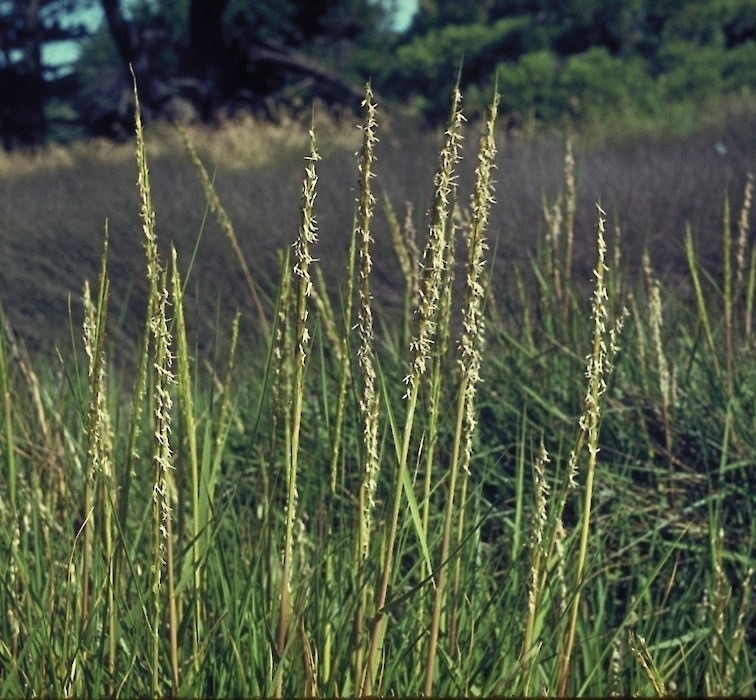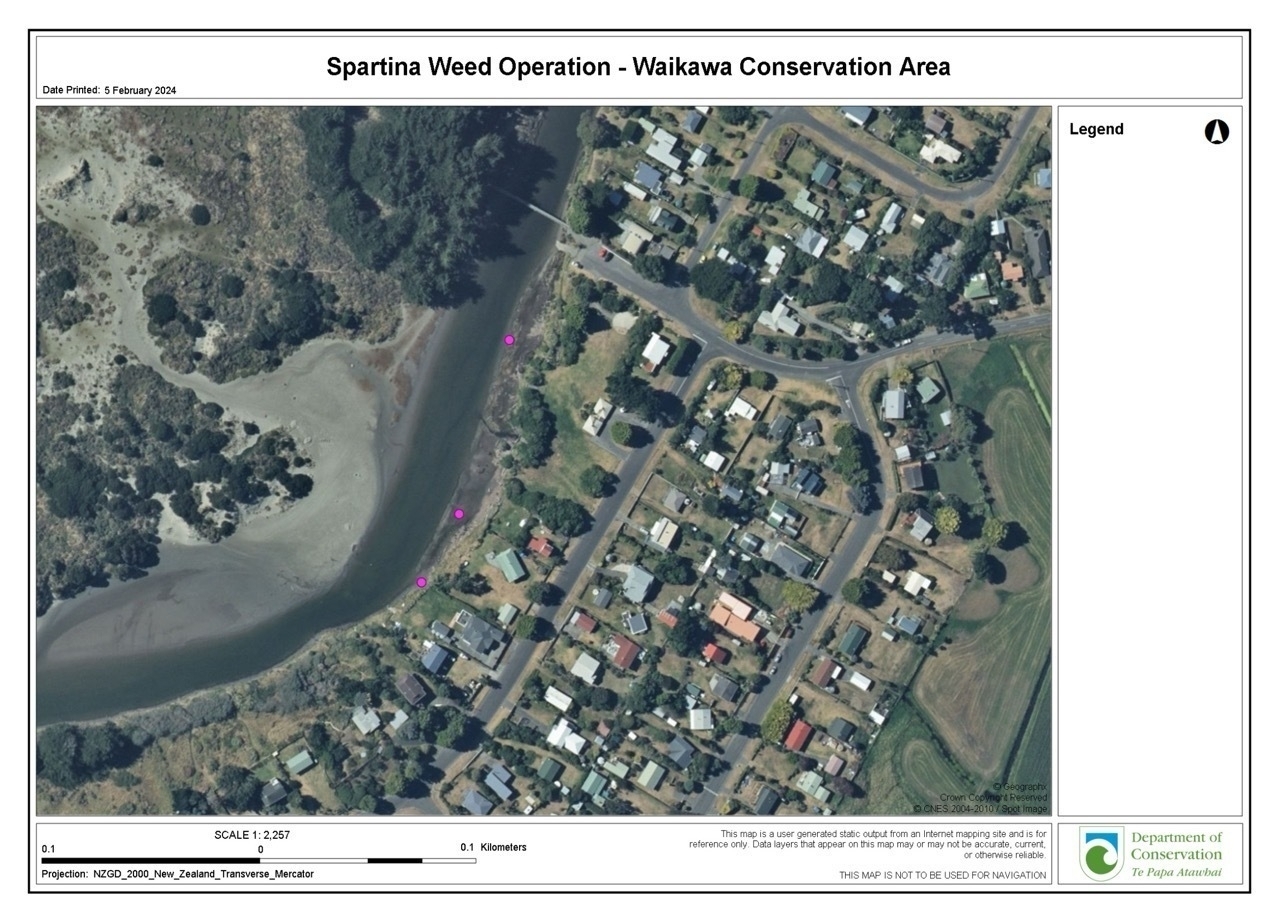
I received the following notice for distribution to the wider community:
Spartina weed control – Waikawa Conservation Area
The Department of Conservation is planning to undertake a herbicide operation to control the weed, Spartina (Spartina anglica, Spartina alterniflora), within the inter-tidal zone of the Waikawa Stream (see map).
Spartina is an invasive weed that colonises inter-tidal zones such as river mouths and estuaries, detrimentally altering such ecosystems. It forms dense clusters that trap sediment over time, raising the ground level above the high tide mark. Large estuaries and shallow harbours can be reduced to thin drains surrounded by weedy pasture, resulting in an immense loss of biodiversity. For this reason, it is important that Spartina is controlled to maintain low density levels.
The control operation will be undertaken between the 19th of February and the 08th of March 2024. Three known Spartina incursions exist at Waikawa, encompassing an area of approximately 1.5m2. They occur adjacent to the Waikawa Stream, between the end of Waikawa Beach Road and the ocean. The infestations will be treated with a 1.5% glyphosate-based herbicide solution via a knapsack. To minimize the risk of applying herbicide to non-target species and reducing adverse effects to the environment, the operation will only be undertaken during low tide and light winds.
If you have any concerns and/or questions regarding the operation, please contact us via the details below. Additionally, if you would like ≈24-hour notification of the operation’s commencement, please advise.
Kind regards/Nāku noa, nā
Stephen Conn
Ranger | Kaiārahi ā Mahi
Department of Conservation | Te Papa Atawhai
Palmerston North Office, 28 North Street, Palmerston North
Phone: 06 350 9700
Email: manawatu@doc.govt.nz

Weedbusters has additional information about Spartina:
What does it look like?
Perennial, clump-forming grass (<1 m) with rhizomes and fibrous roots and erect stems (4-9 mm diameter) with many brownish leaf sheaths. Alternate leaves (5-45 x 4-15 mm) are deeply wide-ribbed on upper surface and have ligules (1-3 mm long). Seedheads are occasionally seen, and seed is occasionally produced at some sites.
Are there any similar species?
Only grass species found in the inter-tidal zone apart from the small native non-grass Zostera. Tall fescue, couch and other grass species are similar to spartina but none of these are found in the intertidal zone.
Why is it weedy?
Colonises the bare inter-tidal zone where it forms dense clumps and traps sediment. Tolerates all weathers and temperatures, fire, grazing, and other damage. Rhizomes spread slowly and broken fragments resprout easily.
What damage does it do?
Traps sediment, raising the level of the ground above the high tide mark and destroying the inter-tidal zone and habitat. Other weedy grasses succeed spartina, creating dry 'meadows'. It can reduce large estuaries and shallow harbours to thin drains surrounded by rough pasture, resulting in an immense loss of biodiversity.